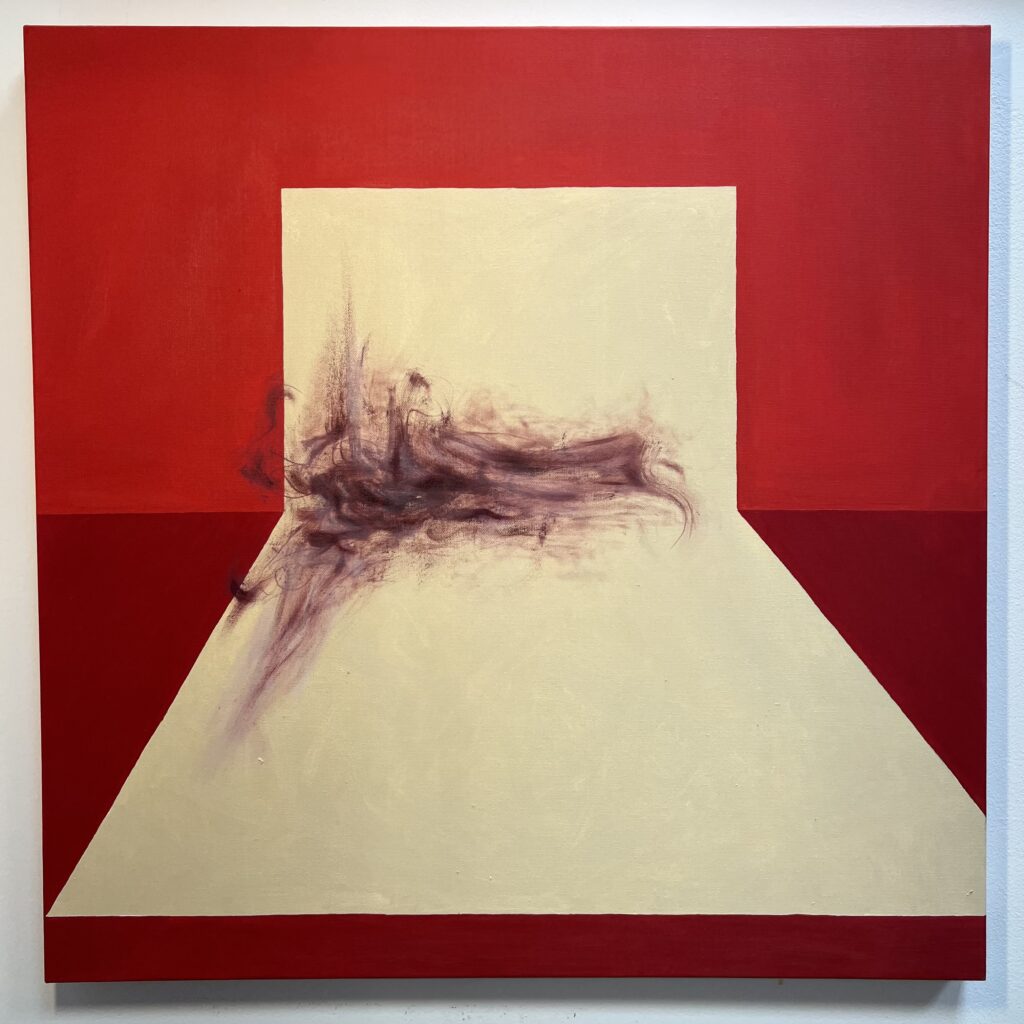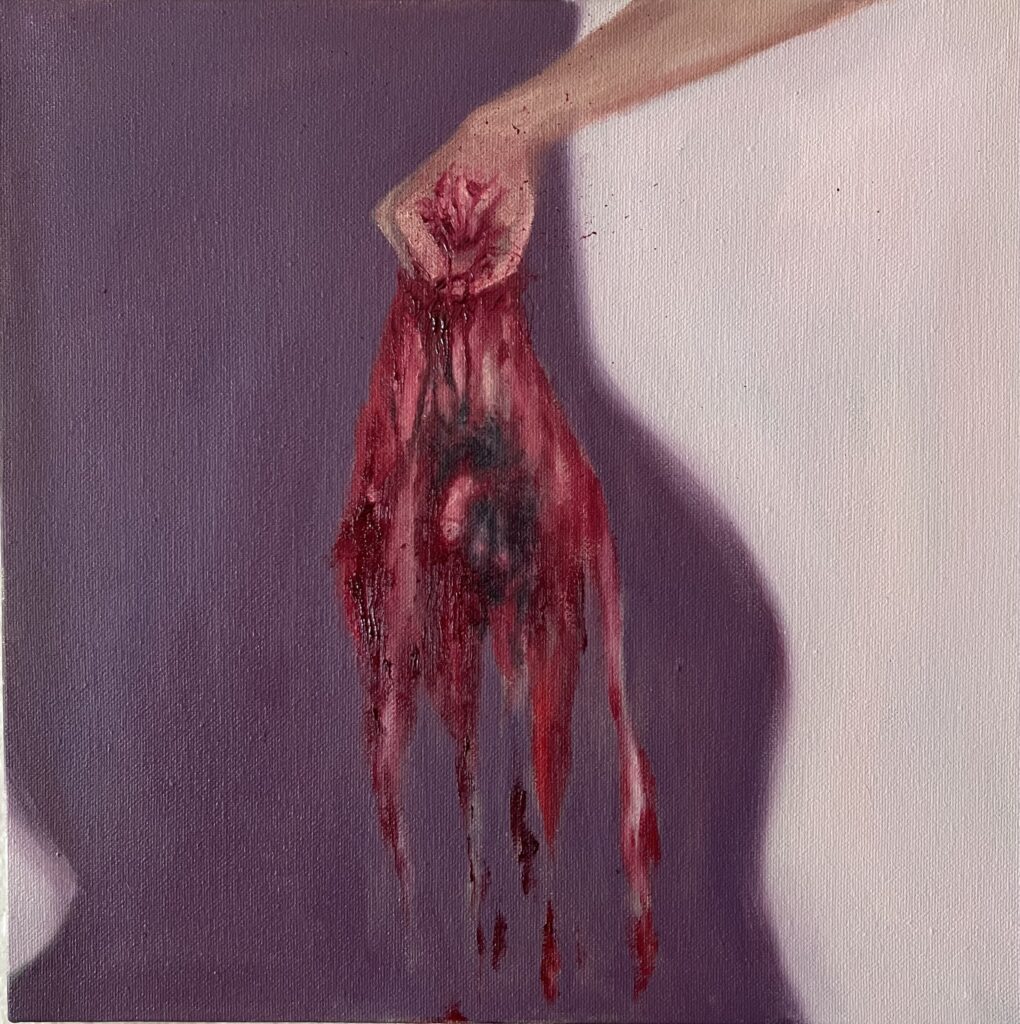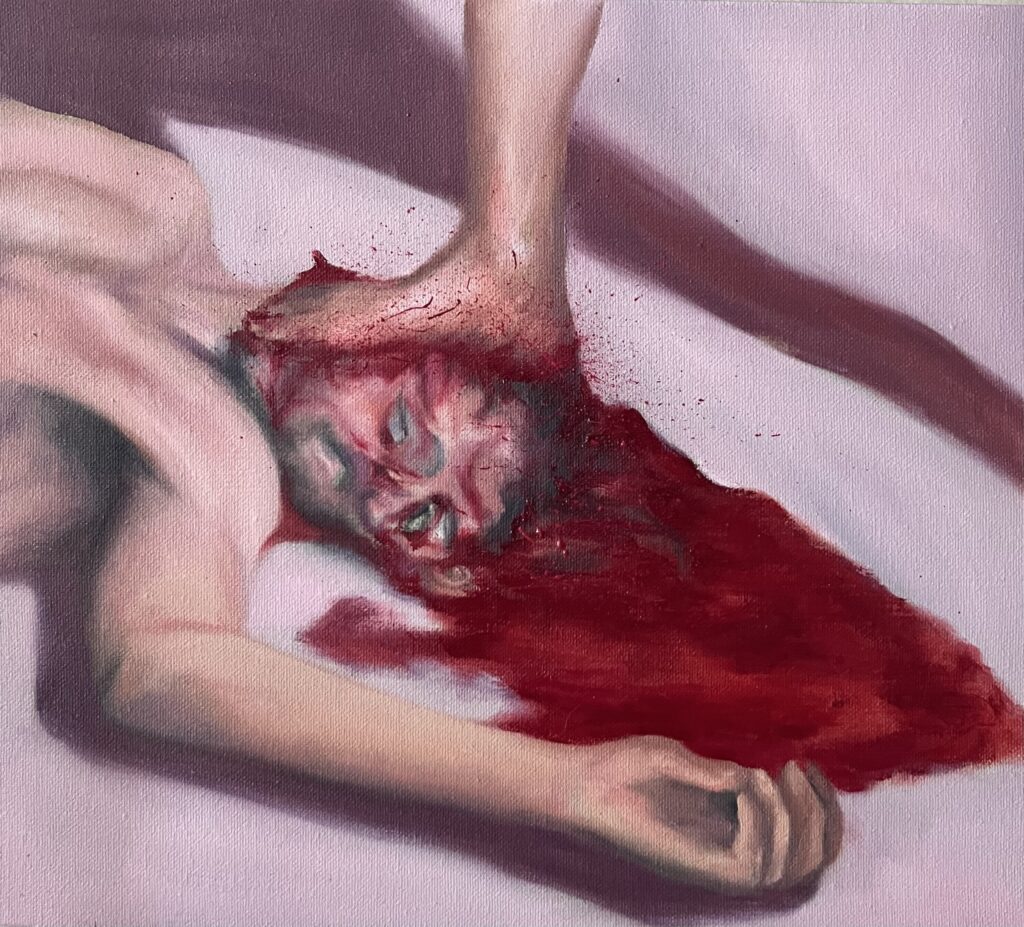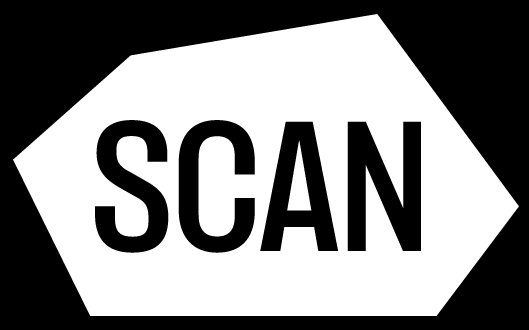Interview with Jordan Binney
Can you introduce yourself?
“My name is Jordan Binney, I am a newly graduated alumni from SCAD. While there and through high school I discovered my love for painting thus fore I have continued to expand my painting career since then through local, national, and international exhibits as well as strictly focusing on my studio practice regardless of any other job I have or anything else going on in my life. Painting comes first for me.”

Can you tell us about your recent painting series and animation?
“The series that I’m currently working on was based off of a deep reflection process of what I’ve gone through in life and how people, conversations, and experiences have made me feel but have also made me who I am. I sat down and reflected on my trauma by writing a memoir then the series came to life. I approach starting a piece by contemplating metaphors and symbols I can use to communicate to my viewers how I’ve felt in the past and what I can do to most clearly get my voice across through a stagnate image. Most of my recent work being strictly in Oil paint are left Untitled because of the fact I want to give my viewers as little hints as possible as to what my intended message is. I like to give my viewers a chance to interpret without my input before explaining what it means to me personally. One thing SCAD taught me was to paint fast so within my process of painting I’m able to produce a lot more work than I used to be due to learning to not try to control the medium. I’ve learned to really respect the different mediums I use and in addition to that I often build all my own canvas’. This gives me more feelings of ownership over my practice as I am literally making something into existence. The most important parts of my practice are the aspect of control and choice as this is me choosing what I want to share and how I want to share it. Especially since my naked body is such a heavily explored concept in my work as a woman its important to me to feel like no one is telling me what to make and how to make it considering there is no “right way” to make art. Recently I’ve been exploring other mediums to add into my portfolio practice, for example I’ve been looking into animations and a bit of performance and film because they provide me with more than one frame to tell a story while painting only allows me one chance to get a message across. You can see this is my most recent animation “Bend.”
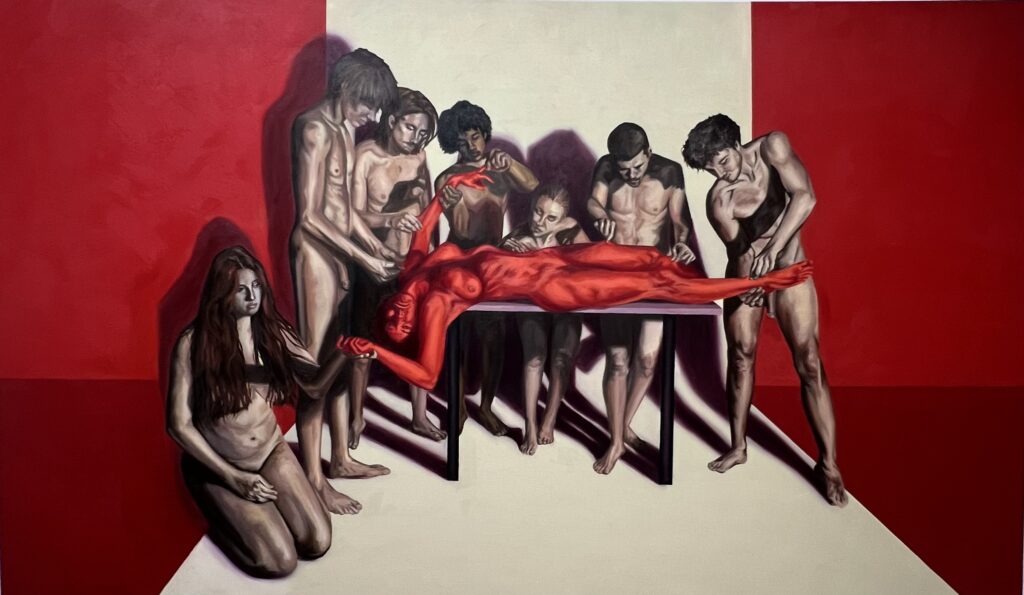
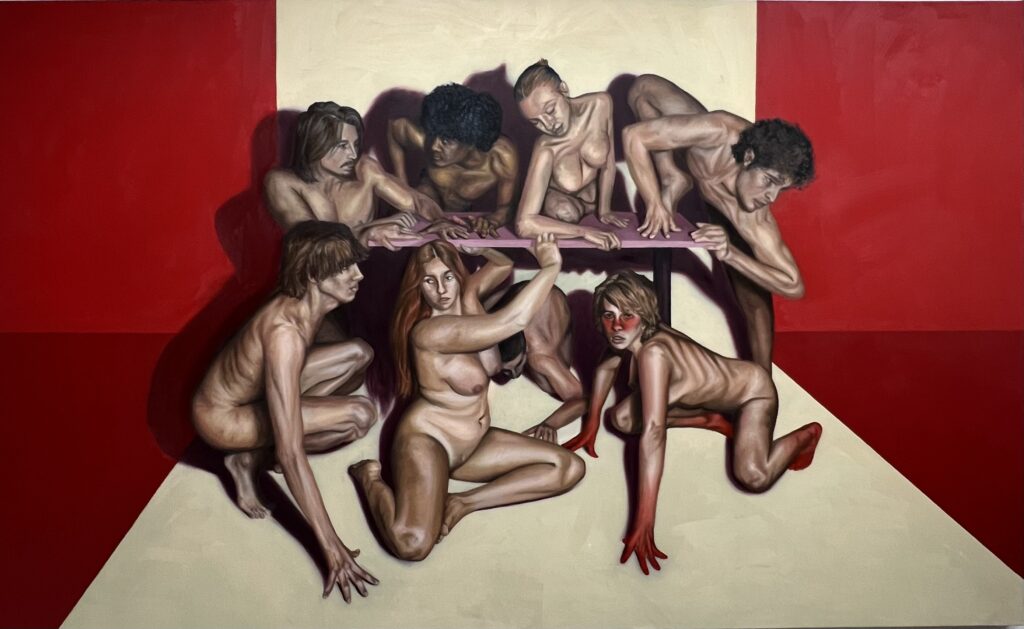
What drew you to becoming a painter?
“Becoming a painter was an easy calling for me to figure out to be honest. A lot of things happened in my life that led me to this decision. I was a gymnast my whole life and played volleyball and that was my calling for a long time… until I broke my back during the season and was forced into finding other ways to of happiness. During high school I was finally officially diagnosed with major depressive disorder and this threw me into rock bottom and I was there for a while. During this time of intense therapy and trying nearly everything I could to get better I found my refuge in painting. I found that literally the only thing that made me get out of bed, wake up, or just gave me one thing to look forward to was the painting I was working on at the time. To this day I still swear that painting saved my life. Ever since I’ve just put all my energy in to harboring this happiness and peace that painting gave me and allowing it to be my safe place with no judgement.”
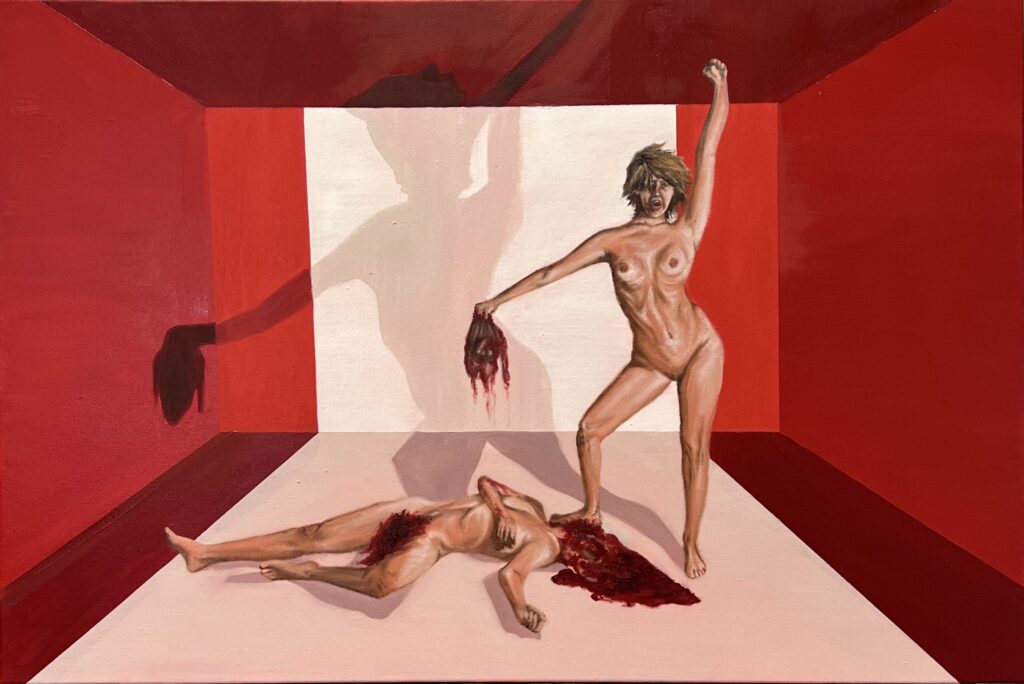
What do you love about making analog art?
“Making art with your hands is so rewarding. Being able to step away from something and think to yourself “I did that” is the best feeling ever. Sometimes I do catch myself looking at my work and thinking “did I seriously do that?” “how in the world did I do that?” Thoughts like this allow me to feel so proud of myself when nothing else gives me said feeling. It’s really hard for me to accept others love for me and others being proud of me or even myself so when you are able to look at something you physically did and feel that gratitude towards yourself is really important.”
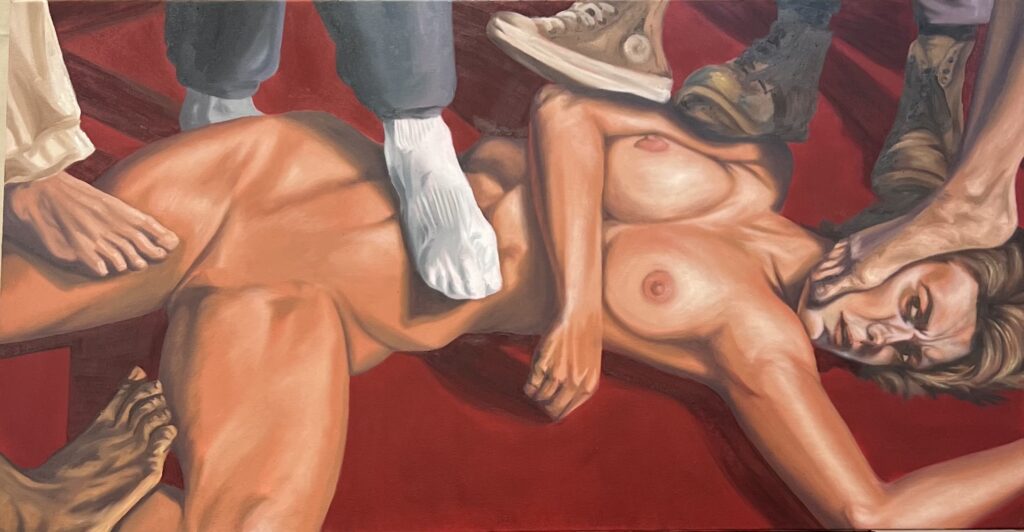
What’s challenging about making analog art?
“I’ve learned so many things over the years regarding hands on art. Material is so important and learning how to respect the materials was really important to me too. I fell in love with painting because it felt like the one thing I had control over in life but that is actually false. For example I ordered some 90 inch stretcher bars for a canvas, they came in warped and I built the canvas with them anyways. Long story short they ended up warping my whole entire painting and I eventually had to downsize the painting by around 3 inches. Every part of the process is important but there are parts that every painter hates, like gessoing and stretching canvas, but on top of this as a ;large scale painter this makes everything harder. Everything is at a bigger scale making every part of the process more important. What’s the most challenging is the financial aspect of all of this to be honest. Making art is expensive and what’s even more expensive is shipping this artwork to exhibit which is so important but being a large scale painter makes it even more expensive. I’ve been blessed enough to be able to digitally exhibit my work internationally twice, so I could avoid the expenses and anxiety of shipping my giant work. However this leads us to another point that in this day and age everything is mostly digital so I feel like its hard for people to view a painting as a painting now a days instead of just an image. We have such an influx of visual information in our time that I feel like it’s hard for others to still fully respect traditional art for what it is. Especially when all these digital platforms are trying to exactly mimic the traditional mediums of art thus for taking away the importance, lore, and challenge of traditional media.”
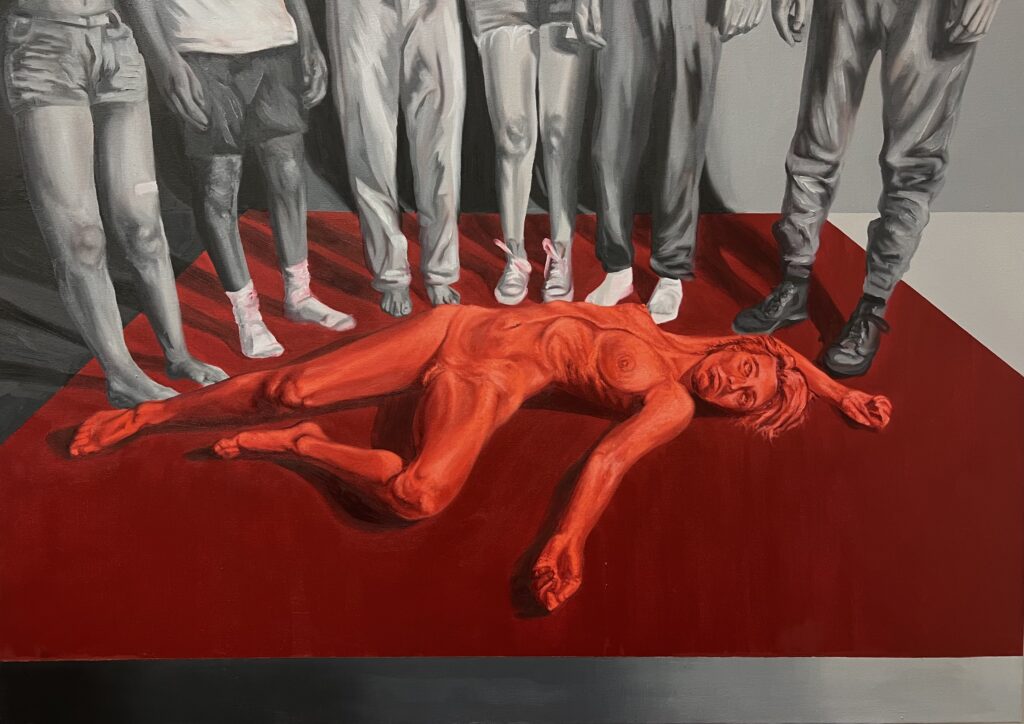
What do you think about the notion that ‘traditional art is dying due to the rapid rate of technological advancement’?
“I don’t think traditional art is dying, I think we will always need art in its true form as we always have for all of time. Yes, the developments in technology are distracting but I think as a creative I personally have a very strong calling to material. I think there’s a relationship to the material as a traditionally practicing artist that is just impossible to achieve with a screen. Everything is perishable but theres a certain feeling that is emitted by materials in your hands that a screen just doesn’t give you. Thus bringing up my point that technology has taken away our ability to not view things as an image. Having the ability to scroll through a feed as apposed to walking through a gallery has completely shifted the art world I think. I don’t think it’s the death of the art world I think as artist we’ve just had to come up with new ways to make our work stand out among the images as a work of art made from someone hands rather than something produced from a software or a moment captured in photo.”
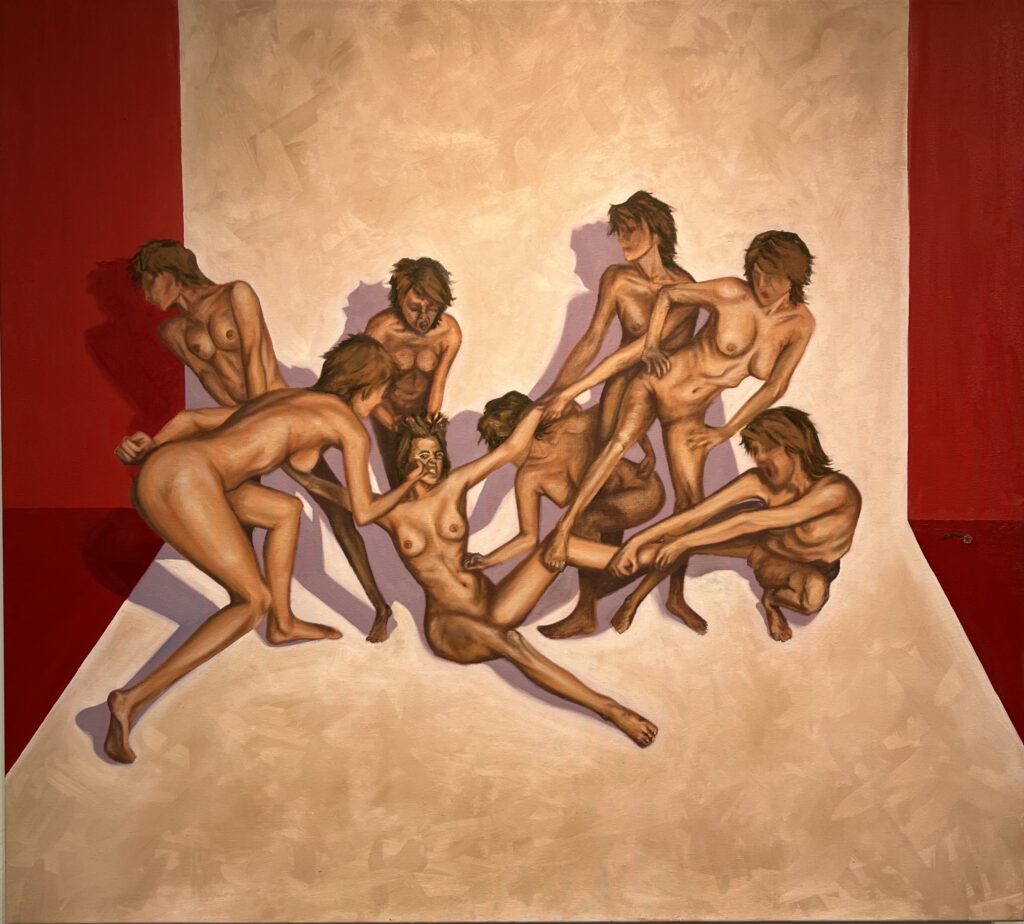
What are your thoughts about mixing your analog work with digital like you did with the bend animation?
“My “Bend” animation was a serious learning curve for me. I had never ventured into digital platforms until this year. I most of the time use them to plan out a composition or just something I can carry around with me as an easy sketchbook although for my recent stop motion animation I realized the language from the piece I was something I could only achieve with digital work. I have been planning to move the animation into a painted form but I had to first figure out how I could achieve a seamless stop motion animation so that I can take the most important information from the video rather then painting 30 images. Instead, using procreate I was able to perfectly plan each of the 30 frames through drawing them for the stop motion for it to be able to move as one. I rarely call a digital rendering of mine as a finished work but for “Bend” it was necessary to be digital. During my process of creating “Bend” I gained an immense appreciation for stop motion animators it took me so much time and so much drawing but afterwards it was worth it. Moving forwards I will continue to venture into learning new mediums event if they are digital and continue to expand my painting practice into any areas that I can.”
